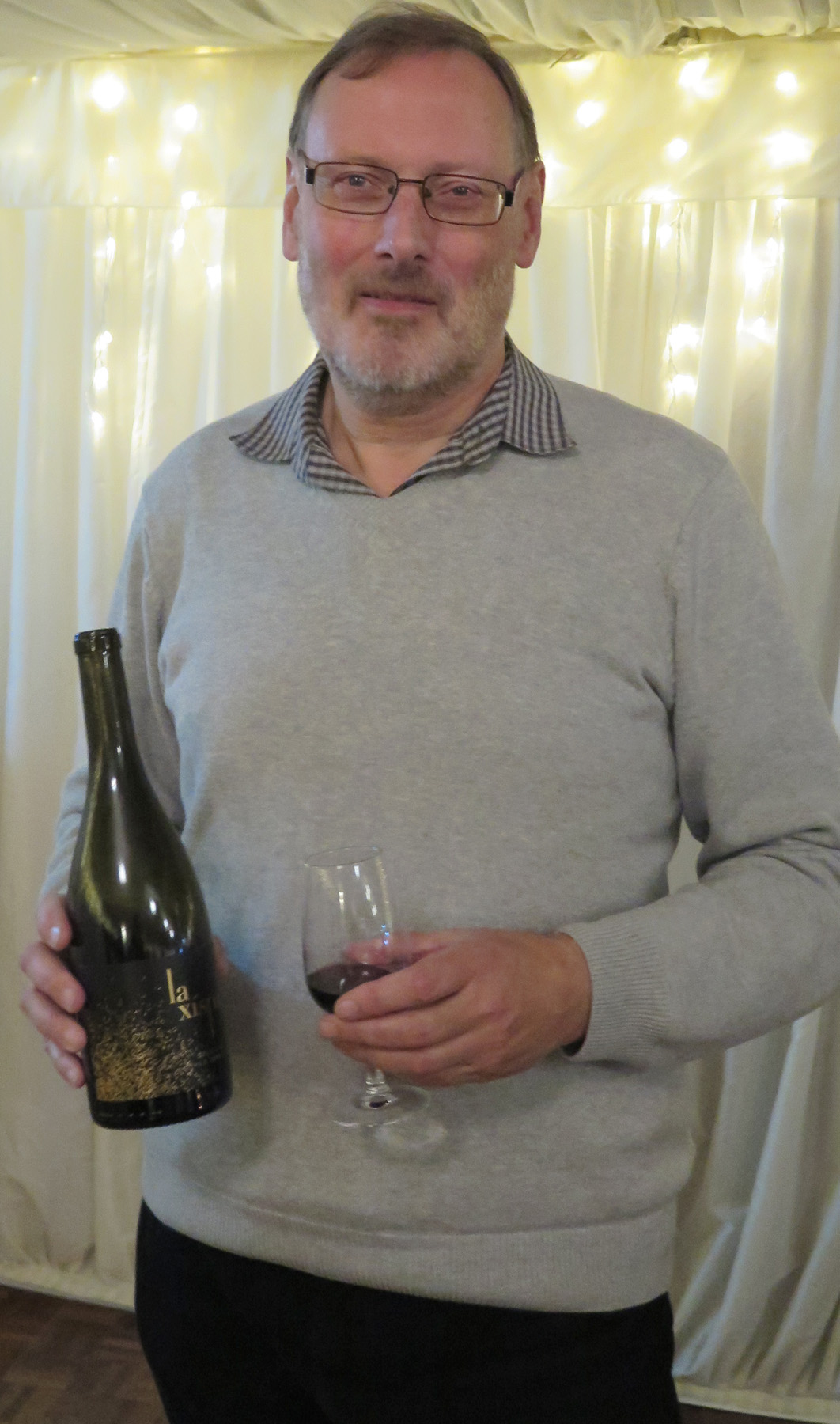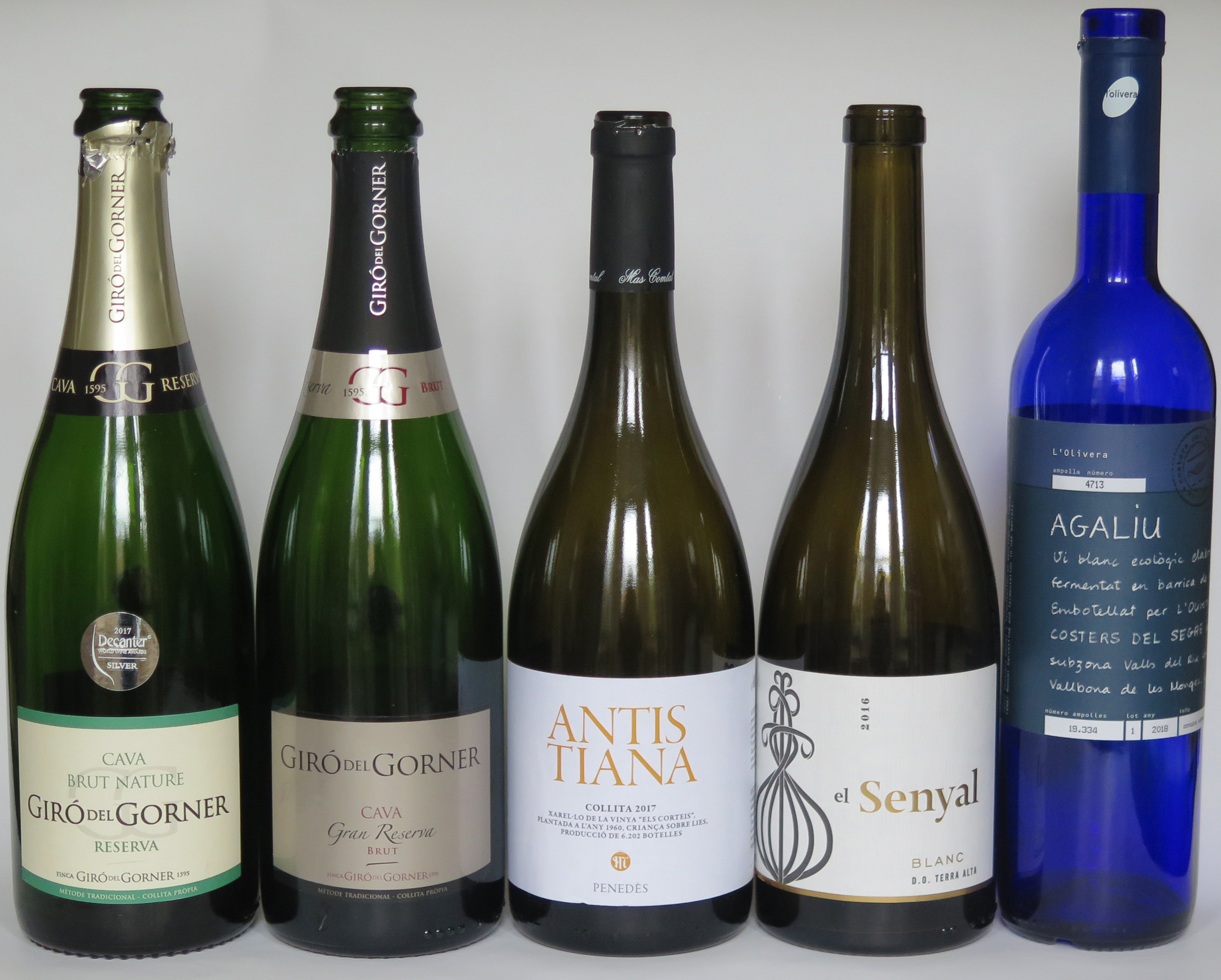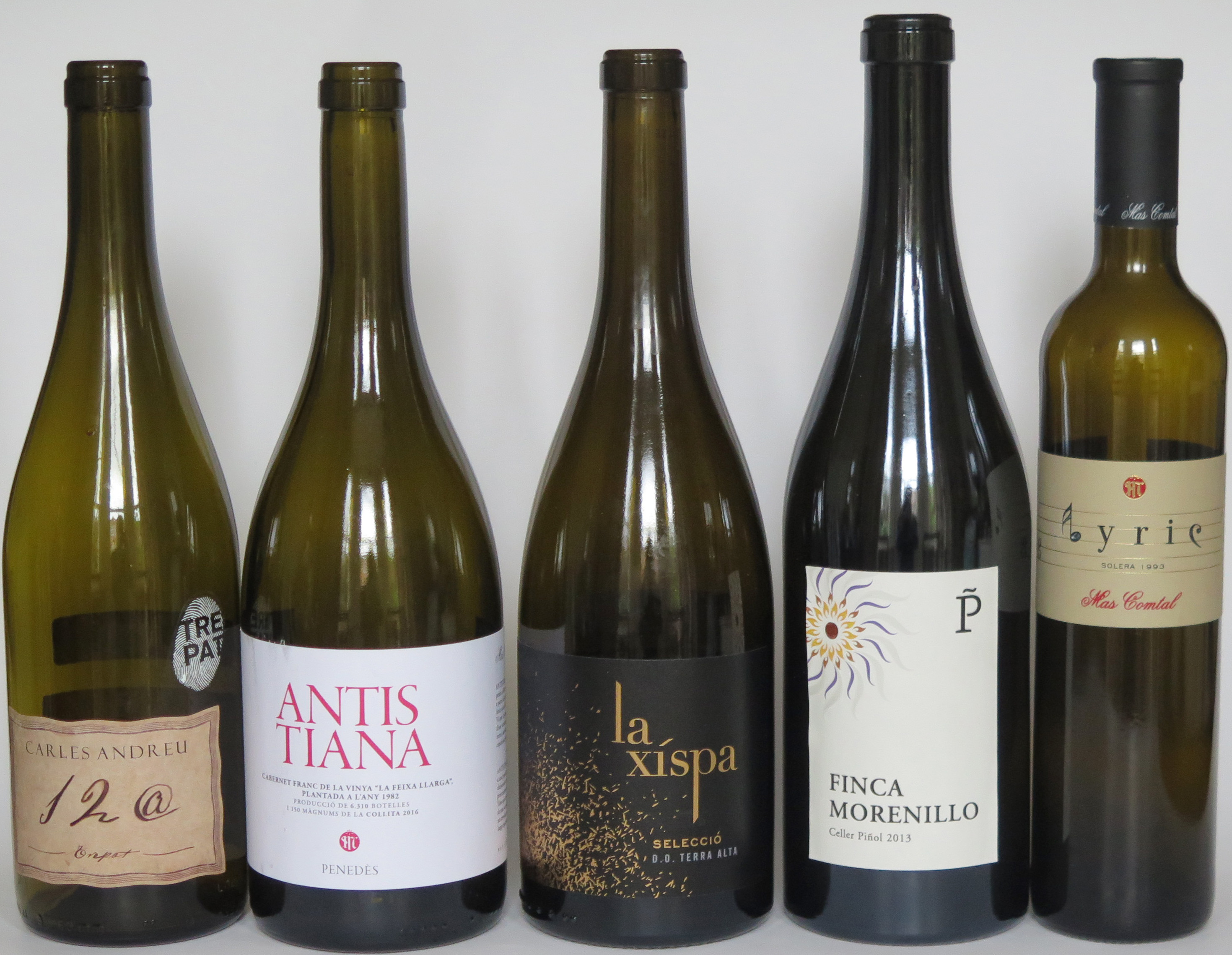 It all started with wine-making in Wantage but now Andy and Ali McLeod make and sell wine in Catalonia’s Terra Alta an hour or so south of Barcelona. Nice journey!
It all started with wine-making in Wantage but now Andy and Ali McLeod make and sell wine in Catalonia’s Terra Alta an hour or so south of Barcelona. Nice journey!
Andy and Ali’s story unfolded at the Wine Club on a cool November evening in the Cherwell Boathouse Marquee, with the aid of some excellent wine – both from the McLeod’s ‘Celler Alimara’ (www.celleralimara.com) and from some of the distinguished independents whose wines they now distribute and sell in the UK.
Early dotcom success led Andy and Ali to dream of vast estates in Bordeaux but then the crash came and it was back to ‘an acre of vines in a Wantage front garden’. The wine was, he admits, ‘pretty horrible but it added practical experience to the theory of a UC Davis course and when the chance came to buy a vineyard in Spain in 2013 they hardly hesitated.
They knew their new vineyard grew good stuff but the next turning point was the discovery that the grapes they sold at 40 euro cents the kilo were being turned by a well known local producer into 35€ bottles. They began to make their own wine. First vintage for their own bottling was 2016 and that’s when they discovered – like their neighbours – that Catalan wines were a hard sell in the UK, despite Parker points in the 90s. Ok, they thought, we’ll take on the distribution of Catalan wines in the UK – and they did.
Now Catalonian wines are gaining profile and public recognition – in the press, at the best Catalan restaurants in the UK such as Paco Pérez’s ‘Tast Catala’ (www.tastcatala.com) in Manchester and on the lists of major UK merchants including Berry Bros, the Wine Society and Vintage Roots.
Our tasting at the Boathouse covered six producers and a wonderful range of wines – almost all from local (or autochthonous) grapes – and styles. We started with two cavas from Giró del Corner, a property whose family have been farming the same land and making wine for over 400 years. Cava, as Andy made clear (and many people recognise) is currently a ‘basket case’. Uniquely it’s the only sparkling wine area with no fixed geographical definition or restriction. It’s under the control of the Spanish government and they have allowed plantings in inappropriate sites. The problem is compounded by the economics of the industry. Three big producers – now largely controlled by private equity businesses – make two-thirds of all the cava and use that buying power to ratchet down the prices for the local growers. The consequence is that the growers are in revolt – and increasingly making their own wine. A new association is setting up and using the name Corpinnat as new category / quality designation. A new Peñedes DO is under discussion… For more info on a complicated story, google Corpinnat and check out the Drinks Business page.
But, to the wines. Both are made from the traditional grapes of cava: Xarel-lo, Macabeu and Parellada. The Reserva Brut Nature, Giró del Corner has a touch more Macabeu, the Gran Reserva Brut has more Xarel-lo in the mix and a touch of dosage to give a slightly fuller palate feel. In theory, ‘Reserva’ means 15 months in bottle, Gran Reserva 30 months but the Brut Nature wine had had 3 years in bottle and the Gran Reserva was, in fact, a 2007 vintage.
 The first wine, a Decanter silver-medallist, was indeed bone-dry with small bubbles and a slight green tinge apparent to the eye. But the Spanish climate means that the grapes are bound to be both sugar-ripe and phenolically ripe and – like its older brother – this was perfectly balanced wine. Top parcels of grapes, extra age and the touch of sugar gave the Gran Reserva a more golden colour and a fuller mid-palate. In Andy’s view this could stand comparison with good vintage champagne and that view found plenty of support. Intriguingly, the second wine had rather larger bubbles (though it retained its tingle in the mouth). Why? Nobody was quite sure though Andy thought it could simply have been that they had been a bit slower in topping-up the wine after disgorgement. Faster fermentation and more impurities in the base wine could have the same result but the former seems unlikely and the smaller bubbles of the Reserva makes the second equally unlikely.
The first wine, a Decanter silver-medallist, was indeed bone-dry with small bubbles and a slight green tinge apparent to the eye. But the Spanish climate means that the grapes are bound to be both sugar-ripe and phenolically ripe and – like its older brother – this was perfectly balanced wine. Top parcels of grapes, extra age and the touch of sugar gave the Gran Reserva a more golden colour and a fuller mid-palate. In Andy’s view this could stand comparison with good vintage champagne and that view found plenty of support. Intriguingly, the second wine had rather larger bubbles (though it retained its tingle in the mouth). Why? Nobody was quite sure though Andy thought it could simply have been that they had been a bit slower in topping-up the wine after disgorgement. Faster fermentation and more impurities in the base wine could have the same result but the former seems unlikely and the smaller bubbles of the Reserva makes the second equally unlikely.
Next up, we had three still white wines made respectively from Xarel-lo, Garnatxa Blanca and Macabeu. The Garnatxa Blanca was from the McLeod’s Celler Alimara. ‘Alimara means ‘beacon’ in Catalan and all their wines have names relating to ‘fire’ in some way. El Senyal Blanc 2016 (which translates as ‘signal) has an interesting backstory with a double / blended fermentation – half in a concrete egg and half in oak foudre. It was softer and (to my mind) rounder, showing the influence of time on the lees. Antistiana Xarel-lo 2017, Mas Comtal was pale, with a saline / citric nose and a clean, sharp palate. The third of the whites, the Agalíu 2017, L’Olivera, had a nose dominated by spicy, savoury oak and a rather fuller mouth feel. L’Olivera is a small co-op run by and for those with physical and / or mental disability. This is a 100% organic vineyard which has the labour resources to experiment with different viticultural (and vinicultural) regimes. The Club was fairly evenly split in its preferences – but a good showing for Andy and Ali’s wine!
 Then we moved on to the reds. First up were two lighter wines (though in Catalonia that is a relative rather than absolute term). The 12@ Trepat, Celler Carles Andreu, is made from Trepat another of the autochthonous grapes. This is reminiscent of Gamay (with its slightly pink tinge) and a lighter Pinot Noir. There was a hint of acetone but this was a highly refreshing wine with light alcohol (hence the 12% in the name) and red / cherry fruit.
Then we moved on to the reds. First up were two lighter wines (though in Catalonia that is a relative rather than absolute term). The 12@ Trepat, Celler Carles Andreu, is made from Trepat another of the autochthonous grapes. This is reminiscent of Gamay (with its slightly pink tinge) and a lighter Pinot Noir. There was a hint of acetone but this was a highly refreshing wine with light alcohol (hence the 12% in the name) and red / cherry fruit.
The second red was the Antistiana Cabernet Franc 2016, Mas Comtal. 100% Cab Franc. Though few would have backed themselves to pick this out of a blind line-up as a Cab Franc, it scored well with the Club tasters. Deep red in colour with a (to my nose) American-oak influenced nose and a bracing palate. There were hints of raspberries and violet and a touch of green / stalky tannin. 13.5% alcohol.
Then, two ‘big’ wines. The first was the La Xispa Selecció 2017, another Alimara wine. To continue the fire theme, ‘Xispa’ means ‘spark’. This is made from Andy and Ali’s best grapes and best barrels The core ingredient is Carignan (also known as Samsó and Cariñena). Historically Carignan was a heavy cropper planted for volume and not much else. But, treat like a quality grape, restrict the yield and focus on older vines and it produces wines of real distinction like this one. A complex, slightly smoky nose with blackcurrant fruit and a touch of garrigue. 10% of Garnatxa in the blend adds a touch of lift to this rich, smooth and very tasty wine.
The second of the ‘big reds’ was Finca Morenillo 2013, Celler Piñol. Morenillo is a serious rarity with perhaps only 15 ha in the world – though now that it’s been re-legitimised in Spain, farmers are ‘discovering’ that their Grenache is actually Morenillo – and benefiting from the rarity and (much) higher price. This is a £57 wine made from 90 year old vines and racking up 15 months in old oak (for oxygenation rather than flavour) and 93 Parker points. Rich black fruit and touches of mint on the nose – perhaps even a note of chocolate with a full mouthfeel and a refreshingly bitter note in the finish.
Last up was a sweet red wine made from 100% Merlot. The Lyric Dolç NV, Mas Comtal is the product of a 15 year old solera with 19% of alcohol and 150 grams of sugar – but far from cloying. A pale and browning red, it had an intense nose of wild strawberries with accents of mint. A very toothsome wine indeed!
A fascinating tasting this – and Andy and Ali have generously offered a discount on all the wines shown. Order though the Club – the form is on the website. We are very grateful for the opportunity to taste such wines, for Andy’s willingness to share some of his deep knowledge about the area and to Ali for tirelessly circulating round the tables to deal with our questions and listen to our opinions.
Another benefit of their generosity was that plenty of wine was left over for re-tasting with bread and cheese after the event. Thank you!
GH: 20/11/19
.